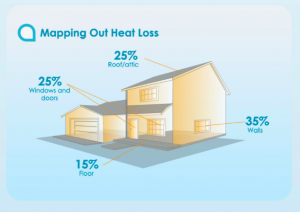
Home Heat Loss
Insulating your attic will help keep your heating and cooling from going through the roof and your wallet. Keep in mind that insulation can compress over time, become less effective and may need to be replaced. Adequate insulation will keep unwanted heat out of your home, reduce the workload on your cooling system and save money on your electric bill.
Grab a ruler or tape measure and a flashlight and go into your attic to measure the depth of the insulation at the attic entry. After measuring, use this guide as a rule-of-thumb to determine if more insulation is needed.
•Fiberglass (paper-backed blankets with the R-value printed on the blanket): less than 3.5 inches
•Fiberglass (pink or white with a loose or coarse texture): less than 5 inches
•Cellulose (gray with a fine soft texture): less than 3 inches
R-value measures resistance to heat flow through a specified thickness of material. The higher the R-value of insulation, the better. According to OUC, “unless the existing insulation is damaged, deteriorated or contaminated with mold or pests, it’s not usually necessary to remove the material before adding more insulation. New cellulose insulation can be installed over existing fiberglass insulation, and new fiberglass insulation can be installed over existing cellulose insulation.”
Most utility companies offer rebates and incentives programs to help cover the cost of installing recommended levels of attic or roof insulation. Typically, the request for rebates must be made within twelve months of installation.
You can use an online zip code insulation calculator such as the one provided by the Department of Energy to determine the recommended attic R-value for your specific region, age of the home, method of heating and home construction. http://web.ornl.gov/sci/roofs+walls/insulation/ins_16.html.
Although you could install insulation yourself with the proper protection and equipment, it’s generally recommended that you hire a licensed contractor who can recommend the type and value of insulation that works best for your home’s age and construction.
Buy Your Side Home Inspections has been inspecting homes and businesses in Central Florida, and specifically Osceola County, for many years. When it comes to serving St. Cloud, Kissimmee, Poinciana, and all of Osceola County, your home inspection satisfaction comes first. We are Buy Your Side every step of the way! For all your inspection needs, call 407.780.0911.
Read More
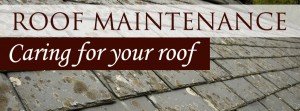
6 Tips For Maintaining Your Roof
Your roof is a major component of your home protecting the structure from all kinds of things that want to invade and damage the interior. At Buy Your Side Home Inspections, inspecting all the components of the roof is what we do everyday.
Here are 6 tips you can easily do to maintain and extend the life of your roof.
- Inspect your roof a minimum of twice a year (especially after major storms) from ground level using binoculars. Viewing your roof from a neighbor’s home with their permission can also be another vantage point.
- Remove excess debris such as leaves, sticks and any other material that may be caught inside your gutters.
- Trim tree branches to prevent them from hanging over your roof.
- Examine caulking around chimney vents and reseal if necessary.
- Repair and/or replace missing tiles or shingles before further roof damage occurs.
- Check skylight seals for leaks and reseal if necessary.
If your home needs a checkup, Buy Your Side Home Inspection will ensure that your home is in top condition or let you how to get it that way in the most financially sensible manner. Call Central Florida’s most respected Home Inspection Service. 407.780.0911.
Read More
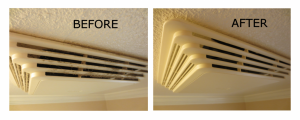
Bathroom Exhaust Fan Before / After
Does your bathroom deep cleaning routine include your ventilation fan? If not, it should. When used and maintained properly, your ventilation fan helps reduce mold and mildew. When it’s neglected, it can host all kinds of airborne particles that can accumulate on the blades and the vent. Follow these six simple steps to keep your bathroom fan functioning properly.
- Flip the circuit breaker for the room.
- Remove the vent cover and soak it in warm water and dish soap.
- Vacuum the fan blades to remove any dust and particles.
- Wipe the blades with a damp cloth.
- Remove dust from the motor and around the motor with a stiff, clean paintbrush and vacuum up any debris.
- Replace the cover when it’s completely dry.
It’s important to run your ventilation fan during every shower and for 30 minutes afterward to reduce moisture in your bathroom and the potential build up of mold and mildew.
If you suspect mold may be an issue in your home or when you need a home inspection, call the Florida Inspector from Buy Your Side Home Inspections. 407.780.0911.
Read More

Got Mold? Keep Calm!
We often receive phone calls from distressed home and business owners that have recently discovered what they believe is mold. Mold is certainly a serious issue in Central Florida and should be investigated, but sometimes a simple phone consultation will let you know if your issues warrant an actual mold testing. After a short discussion on the phone, if we believe you may have a mold problem we will come to collect samples throughout your home, business, or commercial building in order to determine the air quality.
The mold test samples will be sent in to an independent laboratory for proper investigation. A detailed report will be sent to both you and our customer service in the office. If a mold issue is discovered, we will create a protocol to get you on the way to fixing the problem. Since we do not do mold remediation ourselves you don’t have to worry that we will recommend an unnecessary mold removal. as always, Buy Your Side is on your side! Call us today. 407.780.0911.
Read More
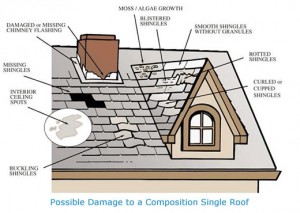
There’s A Battle Up On Your Roof!
Did you know a war is being waged on your roof and in Florida we have several “enemies.” The actual life of the roof will vary, depending on a number of interrelated factors, including the quality of the roofing material and method of installation. Luckily, roofs are designed to last years when properly maintained. Here are just a few of the enemies your roof is battling to keep you and your family safe from the elements.
- Florida is the Sunshine State and the heat and ultra-violet rays from the sun cause deterioration over time.
- Our sea breezes are wonderful but wind can damage, lift and/or remove shingles exposing the roof deck to moisture and debris and making the home vulnerable to water damage and rot.
- Central Florida sees about 50 inches of rain annually – water underneath shingles and other roofing materials exposes the roof deck. The resulting excess moisture can foster the growth of moss, algae and rot which can can infiltrate the house, including walls, ceilings, and insulation.
- We love our lush vegetation in Florida, however overgrown trees that come into contact with the roof can damage roofing materials and the leaves remaining on the roof can retain moisture and cause rot.
- Loose or missing Flashing – Your roof needs tight flashings around chimneys, vents, skylights and wall/roof junctions and should be inspected routinely.
- Aging Roof – Your roof won’t last forever and old and worn out shingles curl, split and lose their waterproofing effectiveness over time and compromise the performance of the roof.
Buy Your Side Home Inspections provides Osceola County with the most thorough and affordable home inspections available. Call 407-780-0911 for more Information on how to save money buy doing a Home Inspection!
Read More





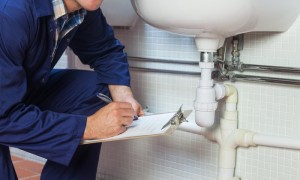

Follow Us!